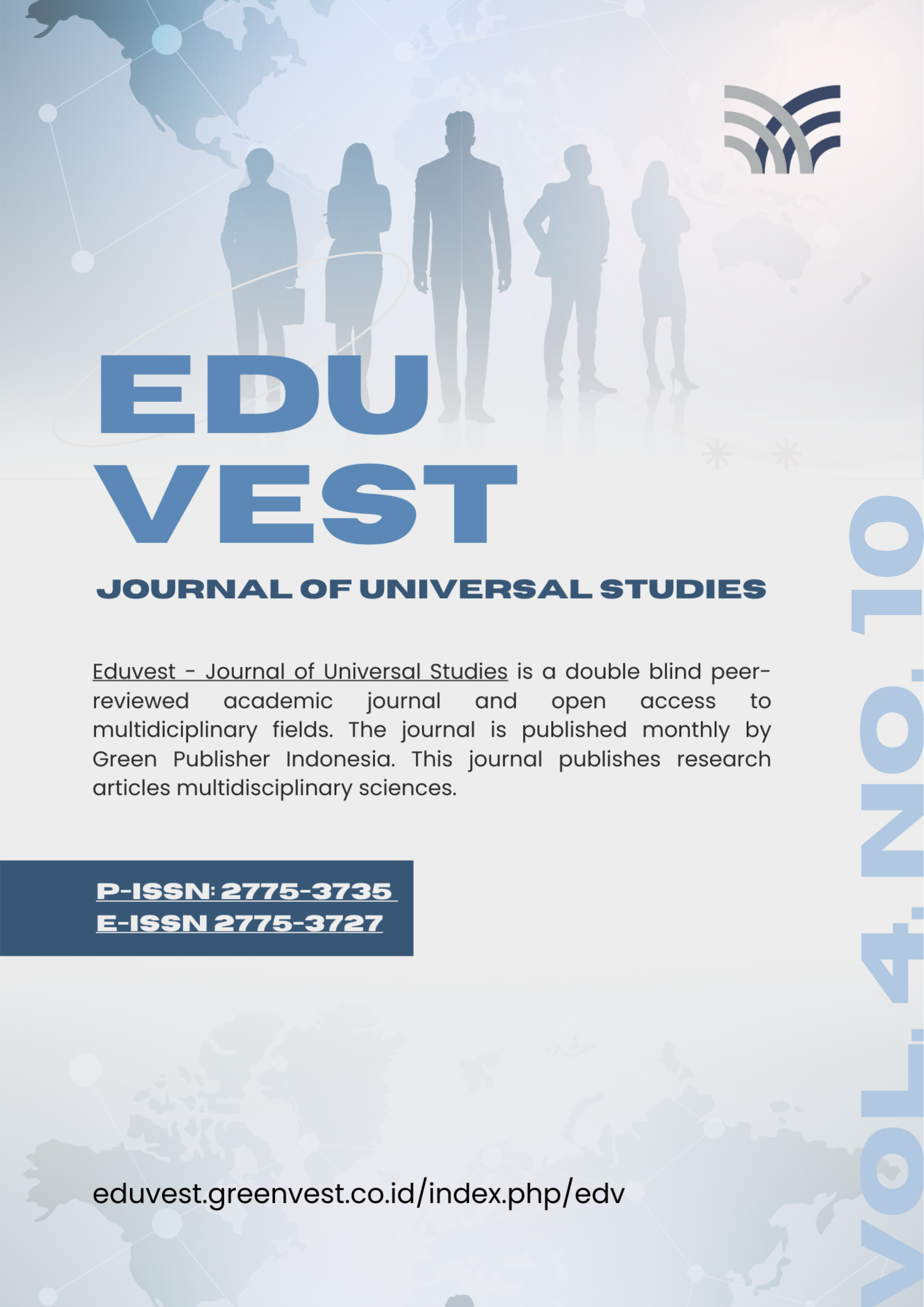Digital Ethnography Study on Converse Shoe Enthusiast Groups on Social Media Networks
DOI:
https://doi.org/10.59188/eduvest.v4i10.1485Keywords:
Communication Pattern, Interaction, Reality Construction, Social Media Network, Digital EthnographyAbstract
The purpose of this research is to obtain an overview of the communication and interaction patterns occurring within the Converse fan group, Converse Head Indonesia, using the critical-constructivism paradigm. This study employs a digital ethnography strategy with a qualitative approach, utilizing in-depth interviews and observations of the group's activities on their Facebook fan page. Through interviews with six informants selected purposively and using the snowball technique, it was found that social interactions among CHI members are grouped into nine dimensional categories based on interview questions. The results reveal that members join the network to socialize and gain access to the latest Converse products, including benefits, price information, and where to obtain them. From the interactions among CHI members, exclusivity, value standards, appearance standards, and ethics were also identified. Lastly, it was found that the interactions within the CHI group predominantly emphasize economic values.
References
Adjei, M. T., Noble, S. M., & Noble, C. H. (2010). The influence of C2C communications in online brand communities on customer purchase behavior. Journal of the Academy of Marketing Science, 38, 634–653.
Barnard, M. (2017). Fashion statements: Communication and culture. In Fashion Theory (pp. 170–181). Routledge.
Berger Peter, L., & Luckmann, T. (1966). The social construction of reality: A treatise in the sociology of knowledge. Garden City, NY: First Anchor.
Denzin, N. K., & Lincoln, Y. S. (2011). The Sage handbook of qualitative research. sage.
Fionda, A. M., & Moore, C. M. (2009). The anatomy of the luxury fashion brand. Journal of Brand Management, 16, 347–363.
Hapsari, P., Manuring, S and Dewi, S. (2017). Consumption and Production Be-havior of Vocaloid Fan Community in Japan 2008-2012. Wahana. 1(12) : 45-52.
Heiner, R. (2006). Social problems: An introduction to critical constructionism. (No Title).
Hendariningrum, E. R. (2014). Fashion and Lifestyle: Identity and Commu-nication. Theses: Veteran National Development University Yogyakarta.
Hinton, P. R. (2013). Returning in a different fashion: culture, communication and changing representations of ‘Lolita’in Japan and the West. International Journal of Communication, 7, 21.
Kaun, A., & Uldam, J. (2018). Digital activism: After the hype. New Media & Society, 20(6), 2099–2106.
Kaur, P., Dhir, A., Rajala, R., & Dwivedi, Y. (2018). Why people use online social media brand communities: A consumption value theory perspective. Online Information Review, 42(2), 205–221.
Kristiyono, J. (2017). Internet Culture: The Development of Information and Communication Technology in Supporting Media Use in Society. Scriptura.
Matthews, D., Cryer-Coupet, Q., & Degirmencioglu, N. (2021). I wear, therefore I am: investigating sneakerhead culture, social identity, and brand preference among men. Fashion and Textiles, 8, 1–13.
Patton, M. Q. (2014). Qualitative research & evaluation methods: Integrating theory and practice. Sage publications.
Pink, S., Horst, H., Lewis, T., Hjorth, L., & Postill, J. (2015). Digital ethnography: Principles and practice.
Sarhub, S. (2019). The meaning of fashion: Lifestyle study on the Indonesia Sneakers Team Surabaya community. Journal of Sociology Dialectics. Vol 14, No 2.
Published
How to Cite
Issue
Section
License
Copyright (c) 2024 Januar Eko Priyanto, Ratna Komala

This work is licensed under a Creative Commons Attribution-ShareAlike 4.0 International License.











